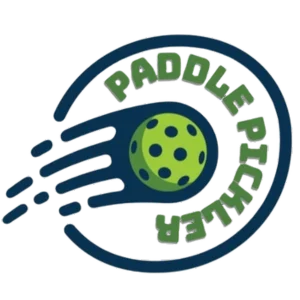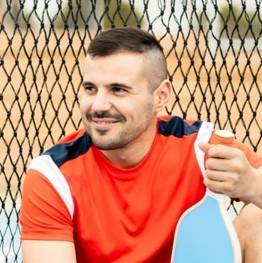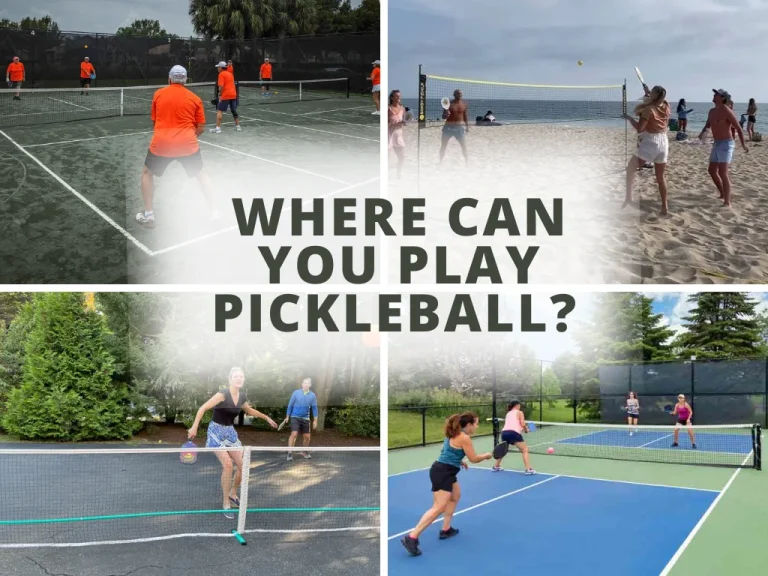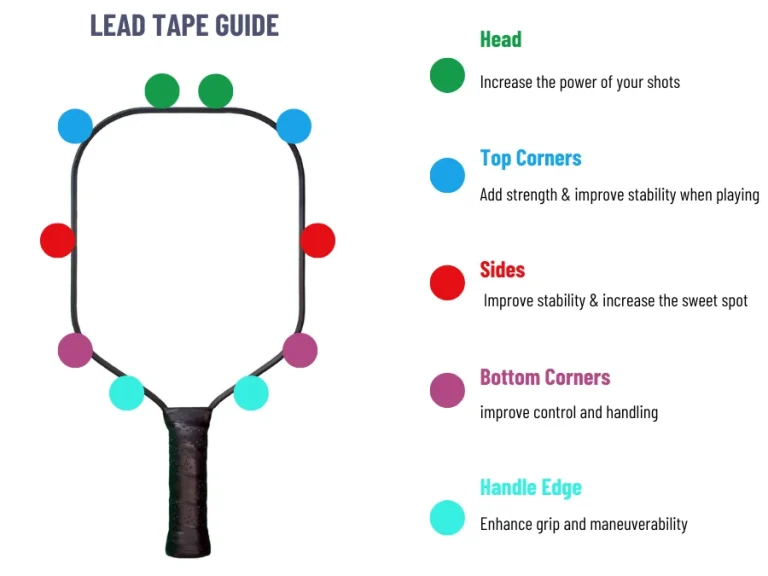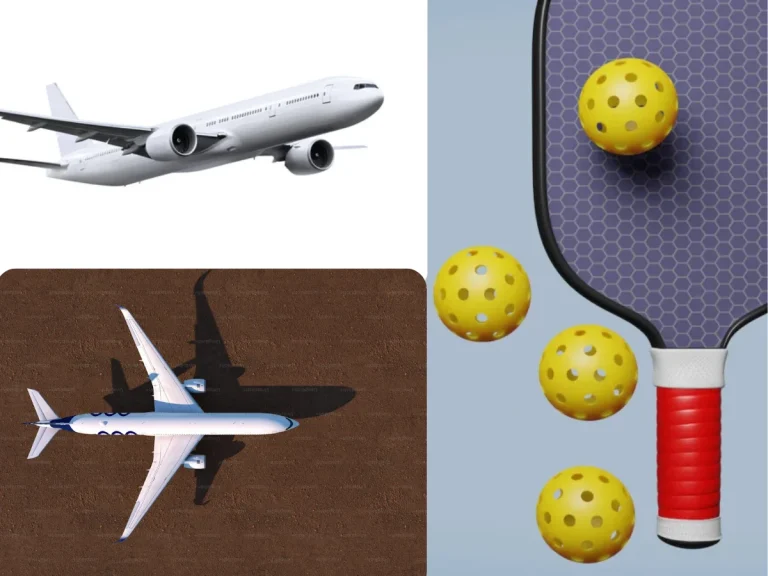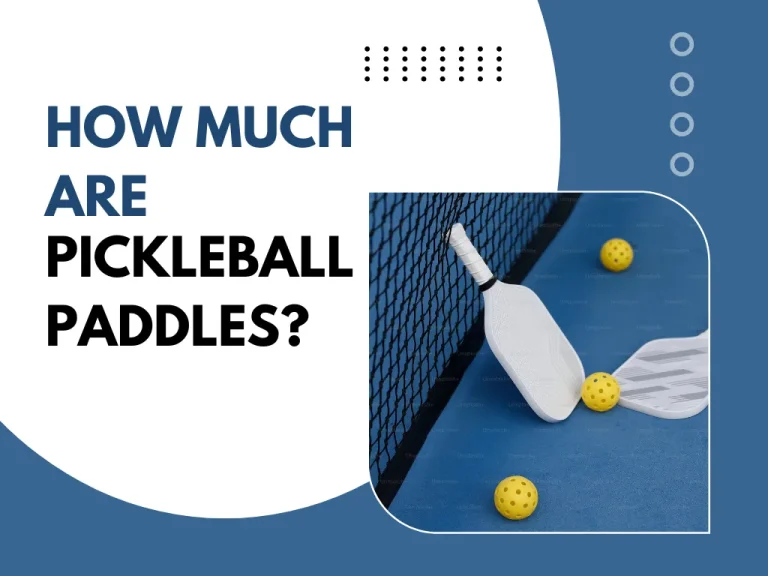Over time, playing pickleball can cause your paddle to get dirty from plastic particles, dust, and sweat. The ball’s contact leaves debris on the surface, and sweat from your hands makes the handle and grip grimy.
Keeping your paddle clean is essential for top performance and long-lasting use. Whether your paddle is made of wood, carbon, glass fiber or any other material, regular maintenance is key. In this guide, we will walk you through the quickest and most effective steps to clean your paddle, covering all essential parts including the surface and the grip.
Method 1: Dedicated Eraser (Carbon Fiber Only)
Cleaning your pickleball paddle with a Magic Eraser is a quick and convenient method that works exceptionally well for carbon fiber paddles. This method is known for its ability to deliver a thorough clean without harming the paddle’s surface. It’s especially effective in removing dirt, sweat, and residue, making it an ideal choice for regular maintenance.
Method 2: Mild Soap and Warm Water (All Types)
Cleaning pickleball paddles using mild soap and warm water is a versatile and effective method suitable for all types of paddles, including those made from wood, carbon fiber, or glass fiber. This method involves using a damp cloth and a small amount of water to wipe the paddle, ensuring a thorough clean without causing water damage.
Method 3: Rubbing Alcohol and a Cotton Pad
Using rubbing alcohol and a cotton pad is a simple and effective way to clean pickleball paddles. The alcohol quickly gets rid of dirt and grime, and it dries faster than other cleaning methods. This method is especially good for removing tough residues that other cleaning techniques might miss.
Method 1: Using a Magic Eraser (Carbon Fiber Only)
Using a magic eraser to clean your pickleball paddle not only saves time but is also more convenient and effective. This method is highly effective for carbon fiber paddles, offering a precise and deep clean without damaging the surface. It quickly removes dirt, sweat, and residue, making it a convenient and efficient choice for regular maintenance. It is particularly suitable for paddles with textured surfaces.
However, it is specific to carbon fiber paddles and may not be suitable for other types of paddles. The eraser might not reach deep into crevices or clean stubborn stains as effectively as other methods.
Here are the detailed steps to clean your paddle with an eraser:
Prepare tools:
- A dedicated eraser to clean the surface of the paddle
- Soft, lint-free cloth (microfiber cloth)
How to clean the surface of the paddle
- Get a Paddle Eraser: Obtain a paddle eraser designed for cleaning.
- Use the Eraser: Using a corner of the eraser, gently rub it over the dirty areas of the paddle’s surface.
- Rub in One Direction: Move the eraser in one direction to remove dirt, sweat, and residue.
- Repeat for All Sides: Ensure that you cover all sides of the paddle evenly, applying moderate pressure to avoid damaging the surface.
- Wipe Away Residue: After using the eraser, take a soft, dry cloth and wipe away any remaining eraser dust from the paddle.
Do not use a Magic Eraser on paddles with a grit texture. It can damage the textured surface and potentially affect the paddle’s performance. For example, if you are using a Six Zero brand Sapphire paddle, you should be careful not to use this method.
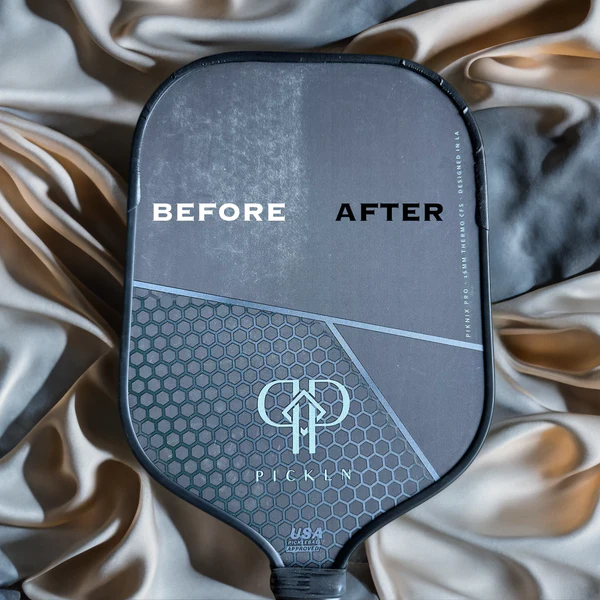
Can I use a pencil eraser for cleaning the paddle?
You can use a pencil eraser, but it’s less effective compared to a magic eraser. Pencil erasers require more effort and can potentially damage the paddle if too much pressure is applied. To avoid deforming the paddle, it’s important to use the eraser gently and cautiously.
Method 2: Using Mild Soap And Warm Water (All Types)
You can use this method for all types of rackets made from different materials (wood, carbon fiber or glass fiber). However, just use a damp cloth and do not use too much water to wipe.
This way is suitable for all types of paddles and is effective for general cleaning. It can reach areas that the eraser might miss. Moreover, it also is a good option for removing dirt and grime from various surfaces. It helps maintain the handle and grip by preventing the buildup of sweat and debris.
Besides,it may not clean as deeply as the dedicated eraser method and can be time-consuming. It requires careful handling to avoid water damage, and may not be as effective for textured surfaces or stubborn stains.
Here are detailed instructions for you to follow:
Materials Needed
- Damp cloth or microfiber towel
- Toothbrush or small brush
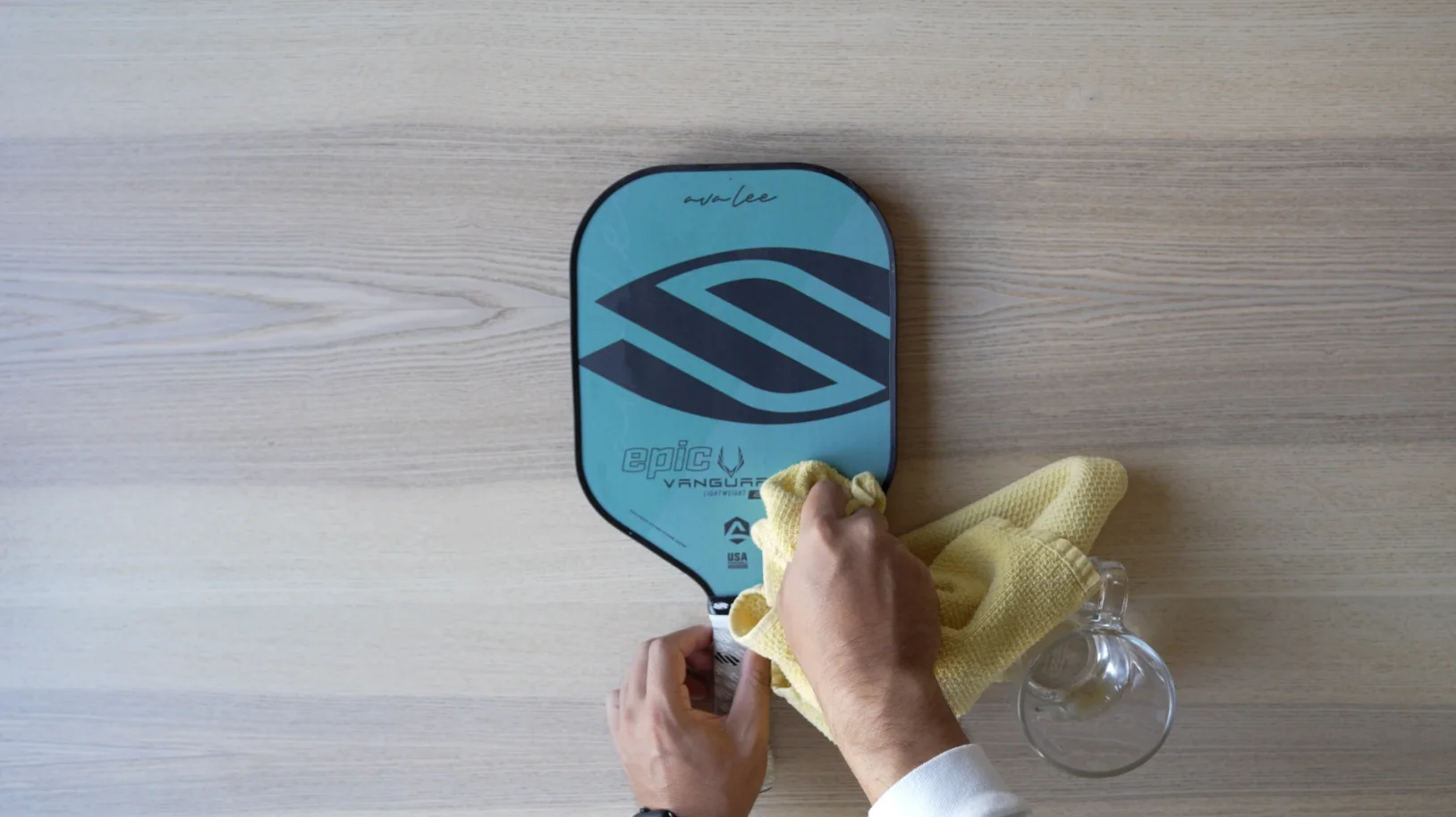
Cleaning Process
Step 1: Cleaning the Surface
You use a damp cloth and gently wipe the paddle. Avoid using towels that are too wet, as excess moisture can seep into the wood and cause it to rot, making your paddle more susceptible to damage. When cleaning, wipe from the top down, ensuring you remove any dirt and debris that may have accumulated.
Pro Tip: After you finish playing, clean your paddle gently and do this regularly. This helps prolong the life of the paddle
Step 2: Cleaning the Handle and Grip
To clean the handle, use a damp cloth to wipe the handle clean. Then, use a small brush to clean the corners and twists of the grip. If your handle is old and no longer feels comfortable holding, you should replace it with a new one to ensure the best playing experience.
Pro Tip: Regularly cleaning your grip, not only keeps it clean but also helps maintain its adhesion, ensuring a better grip while playing.
Step 3: Let your paddle dry in a cool
After cleaning, use a soft towel to dry the paddle completely, paying special attention to the grip area. This ensures that any remaining moisture is absorbed and helps prevent water spots. Following this, let the paddle air dry in a cool, dry place before storing it. Avoid exposing the paddle to direct sunlight or high heat sources, as these can cause damage or warping. Proper drying is crucial to maintaining the paddle’s performance and longevity.
Method 3: Rubbing Alcohol and a Cotton Pad
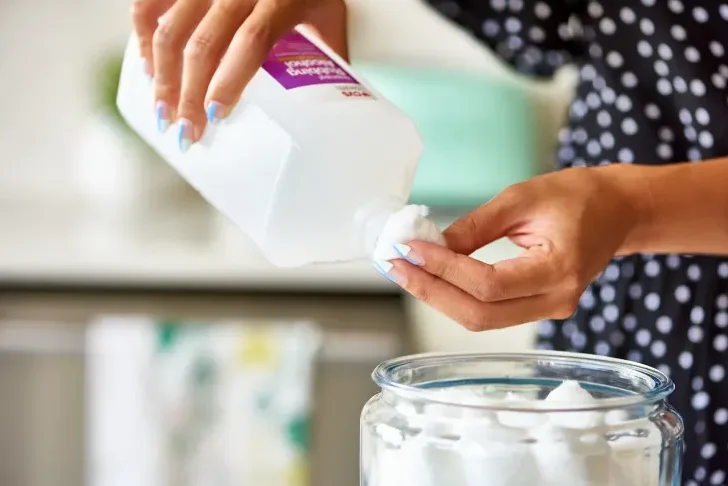
Using rubbing alcohol and a cotton pad offers effective cleaning for your pickleball paddle. The alcohol efficiently removes dirt and grime, and its quick evaporation ensures that the paddle dries faster compared to other cleaning liquids. This way is so useful for dealing with stubborn residue that might not come off easily with other methods.
However, if not properly dried, rubbing alcohol may leave behind a residue that could impact the paddle’s performance. Moreover, excess alcohol or improper application can potentially damage the paddle, especially if it seeps into the grip or textured areas. Careful use and thorough drying are essential to avoid these issues.
Here’s how to do it:
- Prepare the Materials: Gather rubbing alcohol (isopropyl alcohol) and a clean cotton pad. Ensure you have a well-ventilated area to work in, as alcohol fumes can be strong.
- Dampen the Cotton Pad: Pour a small amount of rubbing alcohol onto the cotton pad. Make sure the pad is damp but not soaking wet. Excess liquid can seep into the paddle and potentially cause damage.
- Clean the Paddle: Gently wipe the surface of your pickleball paddle with the damp cotton pad. Now, you use a circular motion to remove any dirt, grime, or residue.
Be careful not to apply too much pressure, especially on textured or grip surfaces.
- Dry the Paddle: After cleaning, use a dry, clean cloth or another cotton pad to wipe away any excess alcohol and moisture. This helps to prevent any potential residue from the rubbing alcohol and ensures the paddle dries completely.
- Inspect and Store: Check the paddle to make sure it’s clean and dry. Store it in a cool, dry place to maintain its condition.
How To Maintain Your Pickleball Paddle
Regular cleaning of the paddle and handle after each use is essential to prevent dirt and sweat build-up, which helps maintain the performance of the paddle and prolongs the life of the paddle. Proper storage is also important. Therefore, keep the paddle in a cool, dry place to avoid moisture damage and warping.
Using a paddle cover can provide additional protection from scratches and accidental impacts. Also, make it a habit to regularly inspect the paddle for any signs of wear or damage, and deal with it promptly.
From my personal experience, I clean my paddle after every 3-4 games. This routine ensures that dirt and sweat don’t accumulate, which can degrade performance over time. Keeping a cleaning schedule also makes each cleaning session easier and quicker.
Here are some tips to avoid:
- Avoid direct sunlight: Do not leave your paddle in direct sunlight or near a heat source, as excessive heat can damage the paddle material and cause warping.
- Avoid harsh detergents: When cleaning your paddle, do not use harsh chemicals or abrasive cleaners, as they can damage the surface and affect the performance of the paddle.
- Avoid excessive moisture: Make sure your paddle is completely dry after cleaning, as excessive moisture can lead to damage, especially for wooden paddles.
When Should You Replace Your Paddle?
If you have just purchased a racket and want to maintain its durability, regular cleaning and care will keep your racket in top condition. However, if you have had your paddle for 1-2 years or more and it is starting to show signs of wear and tear, it may be time to replace it.
Signs that your racket needs replacing include a cracked surface, a loose grip, a deformed structure. Moreover, if your racket no longer provides the same comfort and performance as it did when it was first purchased. Replacing it will help you enjoy a better playing experience, maintain your performance, and protect your hands from unnecessary injuries.
In Short
After playing for a while, my pickleball paddles often gets dirty. By consulting various sources from friends & professional players, I have learned the best ways to clean a pickleball paddle. I covered 3 methods for cleaning your pickleball paddle, each suited to different needs.
- Method 1 is ideal for carbon fiber paddles, providing a thorough clean without causing damage. However, it’s best to avoid this method on textured surfaces.
- Method 2 is suitable for all types of paddles and is both gentle and effective, making it great for regular maintenance. While it might not clean as deeply as other methods, it’s still a reliable choice.
- Method 3 can remove stubborn grime quickly but requires careful drying to prevent residue and potential damage.
For myself, Method 2 is generally the best choice. Regular cleaning with the appropriate method will help keep your paddle performing at its best.
